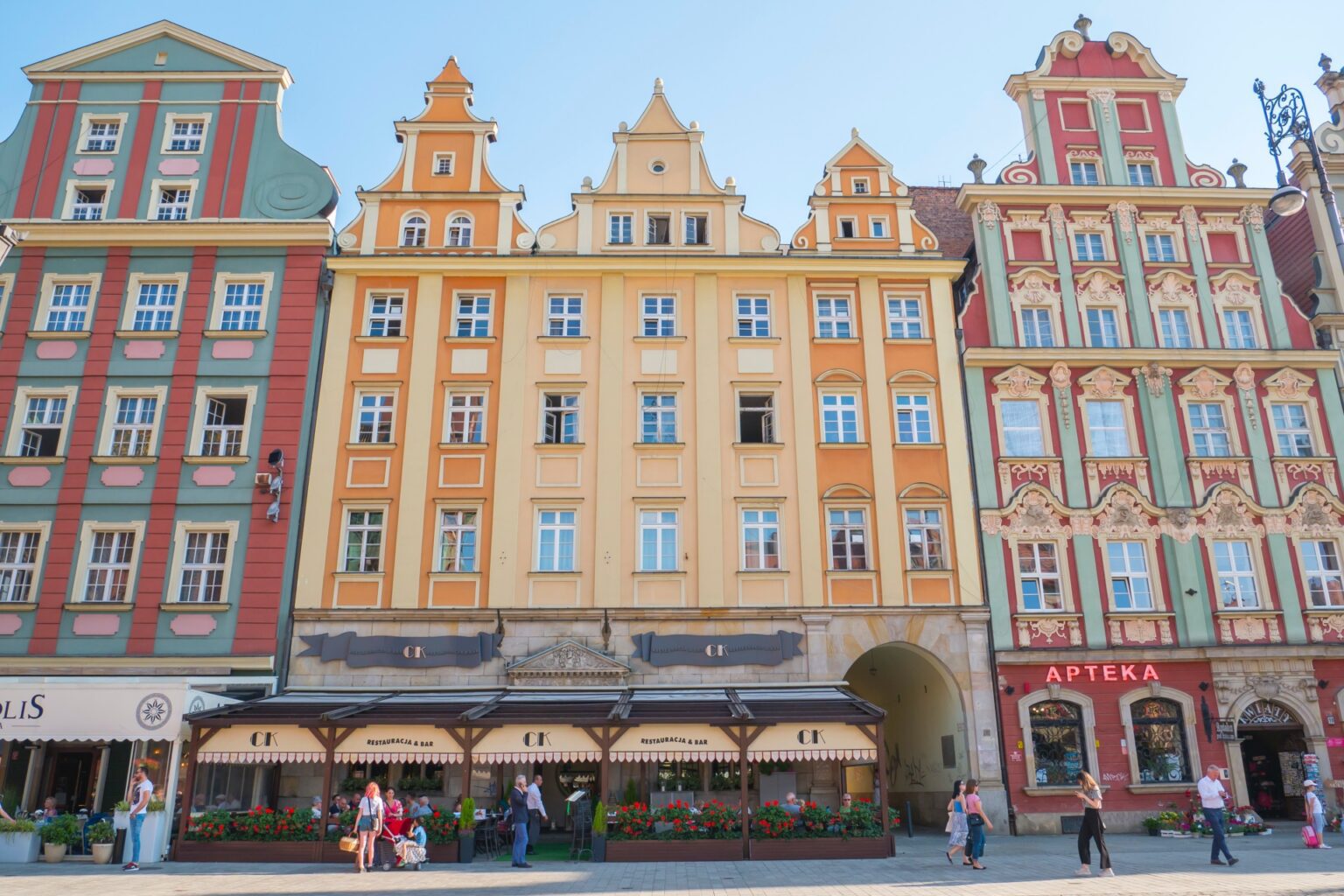
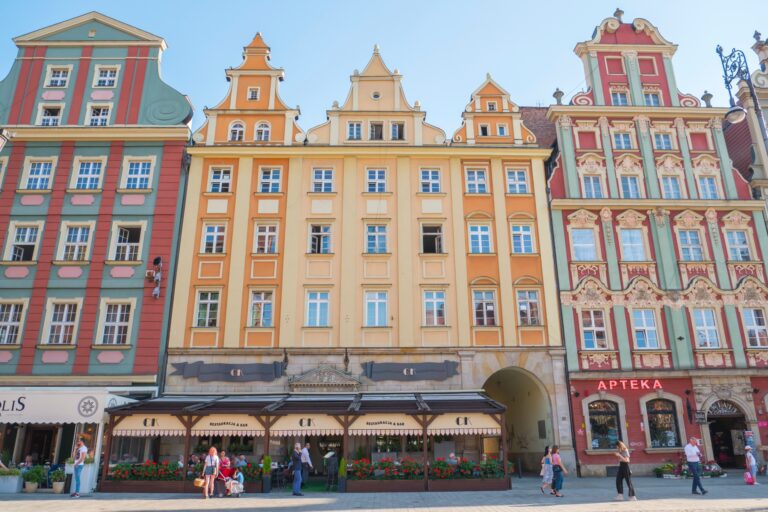
If you are considering moving to Poland, it is a sign that the idea has been in your head for some time. Poland is becoming an increasingly attractive place to live, combining modern urban living conditions, beautiful and diverse nature and a laid-back attitude that is sometimes missing in Western European countries. I’ll walk you through all the important steps that will allow you to move to Poland easily.
In the section “Before moving to Poland”, you will learn about the important preparation steps and formalities so that you can enter Poland and arrange the most important things without any problems. This is a tedious but necessary part of the preparation for which you should be well prepared.
In the section “First days in Poland”, you will find tips on things to do soon after your arrival. In the last section “Living fully in Poland”, you will see how to integrate into Polish society as smoothly as possible and feel at home here.
Before you know all the important steps before moving to Poland, let me remind you of the most important ones. Before coming to Poland, you need to take care of the legalization of your stay (visa, residence permit). You will also need health insurance, some place to live (rented flat or room) and a source of income ( job in Poland or remotely).
The whole process can be expensive, so save a bit of money well in advance. Immediately after moving to Poland, a few easy formalities await you, such as setting up a bank account and… learning Polish. It will be fine – in this article, I will tell you everything you need to know about moving to Poland.
Get ready for the first time in Poland
1. Accommodation: book in advance to save money and be relaxed about your first days in Poland.
2. Currency exchange: you can use your bank card, but much cheaper are the free Curve card or Wise account.
3. Rent a car: you’ll be flexible and able to combine a visit to Poland with dealing with all the formalities.
Once you have decided to move to Poland, you will have a number of important preparation steps ahead of you. Some of these are universal, but some depend strongly on your country of origin. There are many reasons why moving to Poland is a good idea, so I encourage you to persevere and face some formalities.
If you’re wondering how much money you need to move to Poland, the answer could surprise you. The cost of living in Poland is significantly lower than in Western European countries, the UK, the USA, Canada or Australia. However, at the beginning, you will need a little more money to take care of the initial, often one-off expenses.
To start living in Poland, you will need to organise transport to the country (usually a plane to Warsaw airport), arrange accommodation for the first few days (e.g. in a hotel) and transport to your final accommodation.
You will also need to buy a Polish SIM card and do some shopping to get started. It’s a good idea to pay for these with a foreign currency card, e.g. Curve or Wise, so that you don’t lose too much on converting your currency into złoty (PLN – the currency of Poland).
Before moving into your flat in Poland, you must pay one month’s rent in advance. In Poland, the most common way is to transfer the money to a bank account. If you make the transfer from a foreign (non-Polish) account, you will need the recipient’s name and IBAN and BIC/SWIFT numbers.

While you are already in Poland, you should set up a Polish bank account, but for the formalities of your first rental, your foreign account should be enough. If you want to make a transfer in PLN, a free, foreign currency Wise account will be convenient (it is useful on a daily basis in Poland).
A deposit is a one-off payment payable together with the first rent, which you pay when you start renting the flat. It protects the landlord against possible damage to the flat. If there is no damage to the flat at the end of the lease, the deposit will be returned to your account in full.
It usually costs one month’s rent without the cost of bills. However, sometimes landlords require a higher fee, such as two or three rents. So if the rent is 3000 PLN, you must pay between 3000 and 9000 PLN as a deposit.
If you do not plan to start working in Poland immediately, you will need savings for basic start-up expenses, such as food, furnishing your flat (although in Poland you usually rent furnished flats) or transport (e.g. a season ticket for public transport).
To be on the safe side, it is a good idea to have savings of at least a few rents. Often, during the first few days in a new country, there are additional, unforeseen costs for which it is better to be prepared.
EXCHANGE CURRENCIES CHEAPER
Exchange in exchange offices is expensive and inconvenient.
I use the Curve card and exchange currencies at the cheapest possible interbank rate. Using the card is free, and you will receive a bonus after first transaction.
At the beginning of living in Poland, it might be a good idea to focus on the big cities, where it will be easier to settle in and get to know the Polish way of life. Some of the best cities to live in Poland include Wrocław, Kraków, Warsaw, Gdańsk or Poznań. My favourite is Wrocław, where I have lived for over 10 years.
You don’t have to choose your final location right away (especially if you work remotely). You can stay in a particular city for 1-2 months and then move somewhere else, giving yourself the opportunity to test several locations.
In big cities, you can rely on a foreign community and the fact that more people speak English well. It will be easier for you to find your first international friends, through whom you will probably make your first Polish friends. You will hear more and more bilingual couples and groups of friends in cafés and restaurants.

When choosing a city, assess whether it suits you initially – check Facebook for events, look at the list of restaurants and cafés on Google Maps, and look for equivalents of places you use every day outside Poland (e.g. gyms, massage parlours, sports halls, etc.). Also, see photos and articles about visiting Polish cities and look at your surroundings through Street View.
Start looking for a flat or a room in Poland well in advance (at least a few weeks before you arrive in Poland). Some landlords are hesitant to rent to foreigners, not out of cultural prejudice but rather out of fear of later rent collection and communication problems. However, many landlords do not see such renting as a problem.
The largest number of rental offers can be found on Otodom.pl and OLX. A lot of advertisements also appear in special Facebook groups for renting flats. When looking for them online, type into the search engine the name of the city, word “wynajem” (rent) or “pokoje i mieszkania” (rooms & flats) – e.g. “Wrocław wynajem pokoju”, “Wrocław pokoje i mieszkania”.
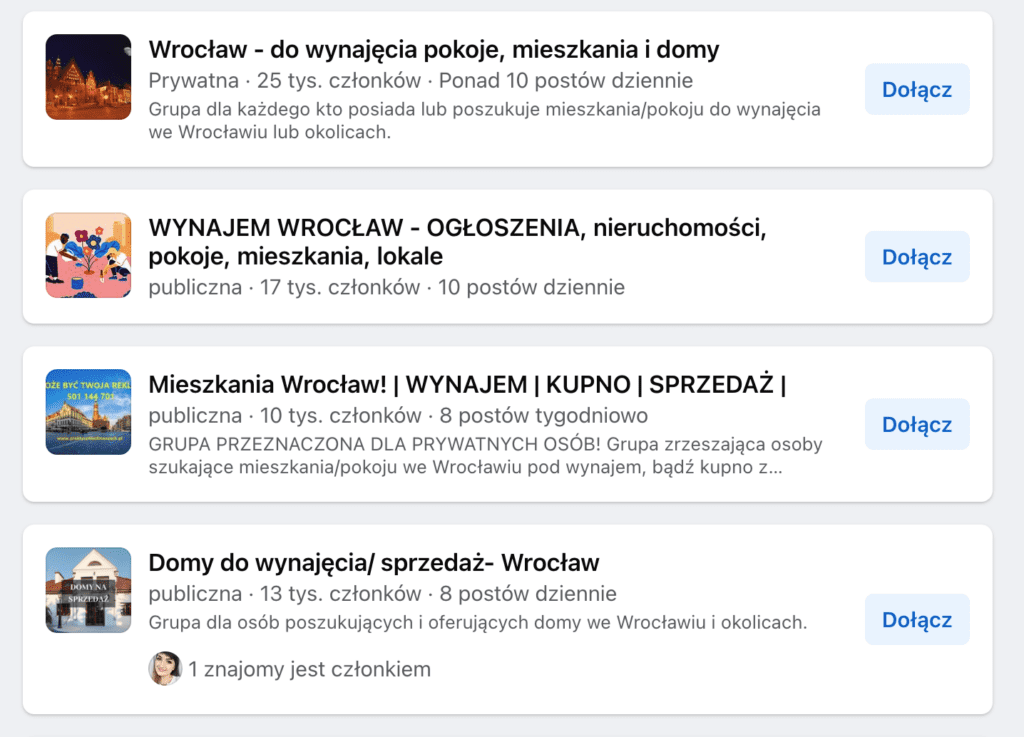
When renting a flat in Poland, you may be asked to show your passport and visa or residence card (Polish: karta pobytu) – depending on your situation and country of origin. You may also have to indicate your place of work and the planned duration of your stay in Poland. Usually, the rental agreement is valid for no longer than the time you can officially live in Poland, but you can agree with the landlord by informing him/her of your plans (e.g. that you are applying for a residence card).
The landlord may offer you a traditional rental agreement (signed only between you and the landlord) or a short-term rental agreement (Polish: umowa o najem krótkoterminowy). The latter agreement requires a visit to a notary and that you provide the address where you will live in case you default on your payments and have to be ‘kicked out’ of the flat. The contract is safer for the landlord, so it is often offered to foreigners.
Remember to read the contract carefully. If you don’t understand it (because it’s only in Polish), ask for an equivalent English version or translate it using Google Translate or DeepL (this tool will do it better). There is no obligation for contracts in Poland to be translated into other languages.
To book a flat remotely, the owner of the flat may ask you to pay a deposit. If this is the case, ask them to sign a flat reservation contract (Polish: umowa rezerwacyjna) remotely so that you can be sure that you will have somewhere to live when you arrive in Poland and that the landlord will not try to cheat you. If you cancel such a lease, the landlord may not give you back your deposit.
If you prefer to check out flats while already in Poland, book accommodation for the first few days or weeks through Booking.com. The range of hotels and flats in Poland is huge.
If you live permanently in the Schengen Area countries (European Union countries and Switzerland, Iceland, Norway, Liechtenstein), you can enter Poland without a visa. If you are from another country, you will need a visa to enter Poland and the European Schengen Area.
Check the requirements for obtaining a visa to Poland for people from your country. You can find details on the website of the Polish Office for Foreigners (pol.: Urząd Do Spraw Cudzoziemców).
One of the requirements to obtain a visa to Poland is to have health insurance. Insurance will be required if you plan to stay in Poland:
The amount of your insurance must be at least EUR 30,000, and the insurance must be valid for the entire period of your planned stay in Poland (i.e. for the period of the visa’s validity). You can buy insurance online before you leave for Poland – it is a must if you want to fulfil all the formalities needed to obtain a visa.
If you are travelling to Poland from the Schengen Area, insurance is not required, but I recommend buying it anyway. In case you need to seek medical attention in Poland, such insurance will cover all costs. This way, you will not have to pay out of your own pocket.
The list of documents you will need to enter Poland legally depends on your country of origin. If you are from a European Union country or Switzerland, Norway, Iceland and Liechtenstein, you will only need a valid ID (passport or identity card) to enter Poland.
If you are from a so-called third country (other than those I have mentioned above), you will need the following documents:
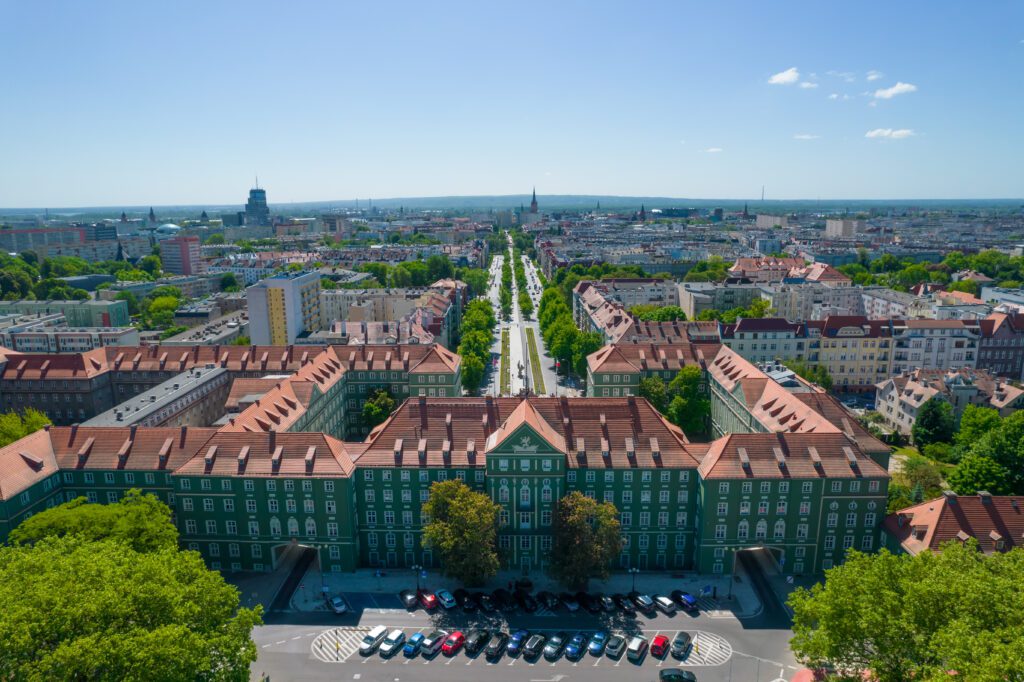
To obtain a visa, your passport must be valid for at least 3 months from the date of your intended return from Poland. You must also submit a visa application with your photo and visa fee. In addition, you must have health insurance and be able to confirm your residence in Poland and that you have the financial means to stay in Poland.
A visa is issued by the Polish embassy or general consulate in your country. You can make an online appointment at the embassy by entering the name of your country in the form and selecting “national visa” or “Schengen visa” from the side menu.
You can apply for a temporary residence permit while you are in Poland before the end of your legal stay. It is granted for a maximum of 3 years and is not automatically extended. If you wish to continue living in Poland after this time, you can apply for another such document or apply for a permanent residence permit or long-term EU resident permit – if you are entitled to one.
You can fill out an application for a temporary residence permit online and then submit it to the Provincial Office. If you are an employee delegated to Poland by a foreign employer, or your case is otherwise special, check the details on obtaining a residence permit in Poland on the government website (available in English).
Visa procedures are straightforward, and obtaining the document is usually unproblematic. It is worse in the case of residence permits – here, unfortunately, you fall into the gears of the Polish bureaucracy and the procedures can get prolonged. However, this is a process that can be gone through with a bit of patience. It is not always possible to communicate fluently in English in the offices – so it is a good idea to deal with the formalities with someone who will serve as an interpreter in case of problems.
Finding a job in Poland is becoming easier and easier every year – especially in big cities, where there are plenty of vacancies for people of all levels of education. Much depends on how you want to work in Poland – remotely for a foreign employer or remotely or stationary in Polish companies.
If you are a resident of the European Union and want to work in Poland, after 3 months in Poland, you must register your stay in the Provincial Office and apply for a PESEL number (Polish identification number). If you are from outside the EU, the best option is to apply for a “temporary residence and work permit”. This will deal with the legality of living and working in Poland simultaneously.
There are different types of permits and visas for people who want to work in Poland (e.g. for highly specialised workers, seasonal workers, people planning business activities, seconded workers, etc.).
Job offers in Poland are best searched for on portals on the Internet. The most popular are: Pracuj.pl, GoWork.pl, Praca.pl and OLX. You can also find a lot of job offers for foreigners on Facebook groups. Especially in large Polish cities, you will find a lot of job offers in English. You will also find many job offers in English on English Jobs Poland.
Travelling to Poland probably involves arriving at Poland’s largest airport – Warsaw Chopin Airport. You may also arrive in Poland at one of the regional airports, such as Krakow, Gdansk, Poznan or Wroclaw. You can find tickets for intercontinental flights on Skyscanner or Momondo, and cheap flights within Europe are best searched for on azair.cz.
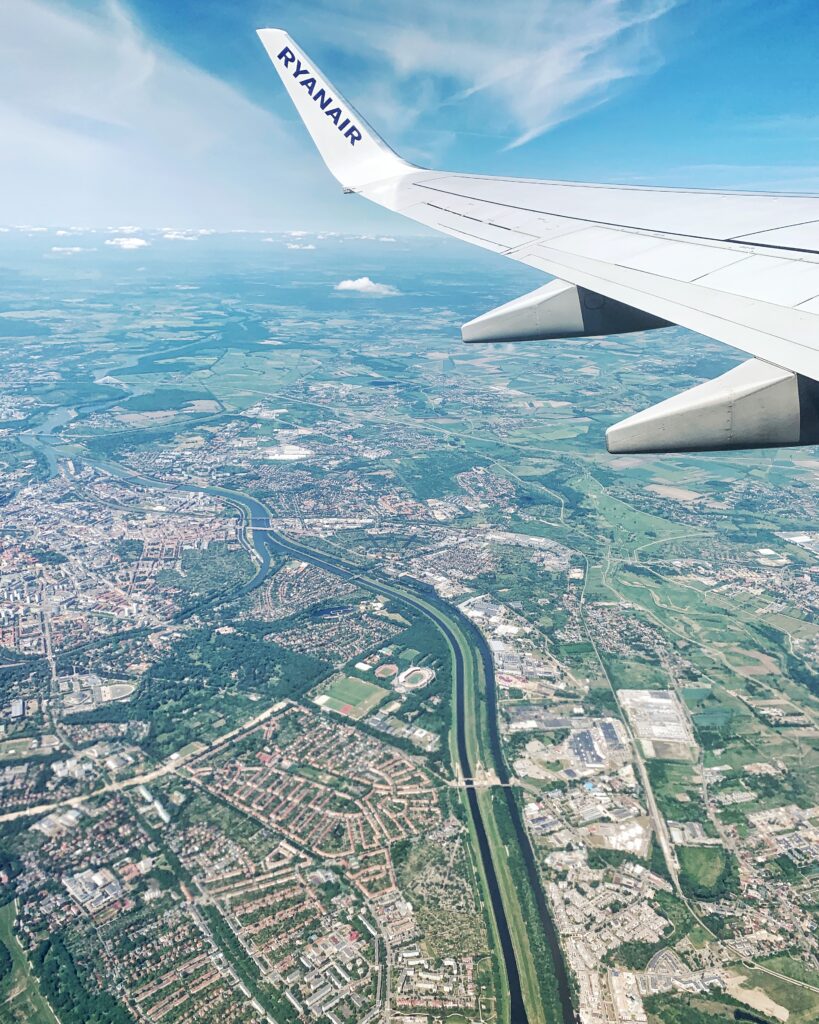

Regardless of your place of arrival, you can get from the airport to the city centre by public transport or taxi. Some Polish airports are accessible by train and bus (Warszawa Chopin, Warszawa Modlin, Gdańsk, Kraków, Katowice Pyrzowice), while some are only accessible by bus (Wrocław, Poznań, Lublin).
You can check train timetables on the Portal Pasażera (Passenger Portal) and bus timetables on e-podroznik.pl. It’s possible to buy tickets for some connections via these websites – next to it you’ll find a button to purchase).
Poland’s trains and buses are modern, and it is increasingly rare to find vehicles older than 10-15 years in major cities. In recent years, Polish carriers have been extensively replacing their fleets, so travel around the country often looks more modern than in Western European countries. The frequency of trains is increasing, and in large cities, airport services depart several times an hour.
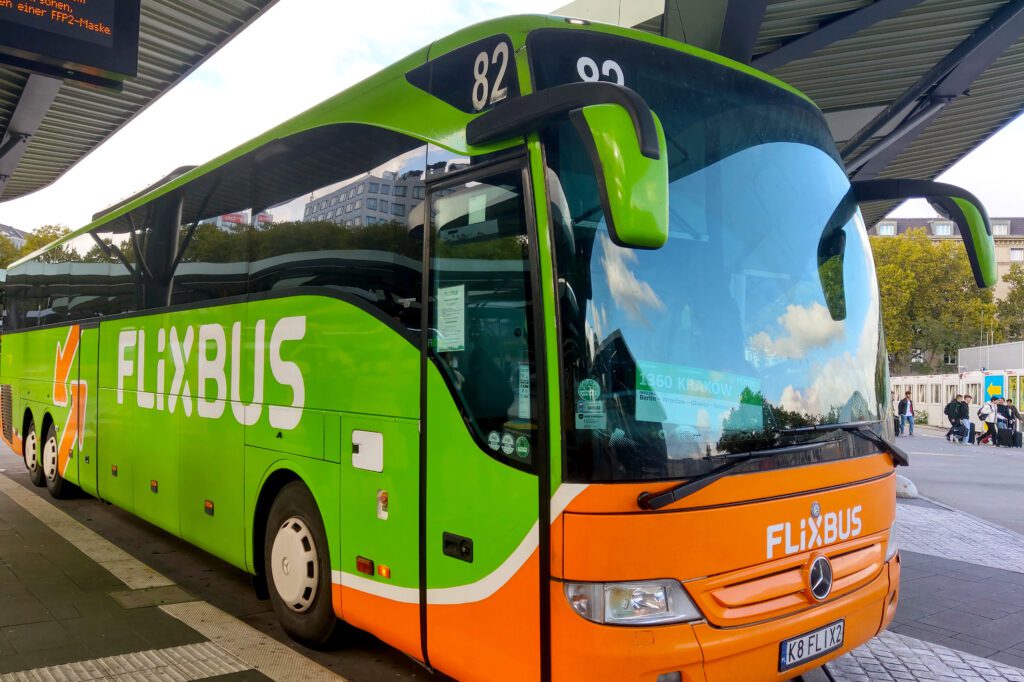
You can buy tickets for a large number of train connections on Koleo, and if a particular train is not available there – you can find ticket machines at the airport or buy your ticket directly from a staff member. You can look for bus connections between major cities on Flixbus.
Remember that in Poland it is standard procedure to add an extra charge (a few PLNs) to tickets issued on board a train if a ticket machine or ticket office is available at the station. No such charges are applied on buses.
Airport train and bus staff often speak English, but you can manage using Google Translate even if you have difficulties. Have your ticket ready (pdf) for inspection, and remember to brighten your phone screen – then it will be easier for the employee to punch your ticket.
Get ready for the first time in Poland
1. Accommodation: book in advance to save money and be relaxed about your first days in Poland.
2. Currency exchange: you can use your bank card, but much cheaper are the free Curve card or Wise account.
3. Rent a car: you’ll be flexible and able to combine a visit to Poland with dealing with all the formalities.
Your first days living in Poland can be intense. You will encounter a language that is difficult to handle, you will have to make yourself comfortable in your new flat and get to know the immediate surroundings. You will have the opportunity to experience your first interactions with Poles and Polish culture and customs. It will be fine – Poles are a friendly and open nation. Let’s figure out together how to make the most of your first days in Poland.
One of the first things you should take care of when you arrive in Poland is to buy a Polish SIM card. There are several major mobile operators in Poland with similar offers. You can look for their points of sale at the airport, but SIM cards can also be bought at newsagents (e.g. Relay, Kolporter) and shops, such as Żabka (the Polish, better-equipped equivalent of 7-Eleven). Mobile networks also have their outlets in shopping centres.
SIM card starters usually cost between 5-10 PLN (USD 1-2, EUR 1-2). In the bundle, you get a small internet data package – enough to check your airport transfer and use the internet for a few days.

All SIM cards sold in Poland must be registered. If you want to buy such a card at a point of sale, you must show the salesperson your identity card or passport. The employee will take down the necessary data from it and register the card. Before you choose a particular network, ask the employee about the price of the starters and the available internet package. Here are the networks that are likely to be available:
Whatever network you choose, the most important thing will be to have an internet package as large as possible. You can use it on your phone, but it may also come in handy during your first days in Poland as an Internet source for your computer (as a hotspot). I don’t recommend signing a contract with an operator – you’ll have to cancel it later and keep an eye on the terms. It will be most convenient with a pre-paid bundle, which you will recharge e.g. once a month.
You can top up your prepaid SIM cards online. You can also do it in some shops by asking the staff at the checkout – for example in Żabka. If you don’t feel confident with the Polish language, this can be good training!
You can travel between the largest cities in Poland most efficiently by train. Ticket prices are relatively low compared to Western Europe, trains offer a high standard, and they are modern and fast. Poland’s railway network has changed drastically in recent years and is experiencing a renaissance among Poles – as a result, trains are sometimes overcrowded.
You can manage at railway stations even without speaking Polish. Timetables and information boards are often translated into English (even at small stations). If you have problems, ask (preferably young) people for help. There is a good chance they’ll speak fluent English and will be happy to help you.
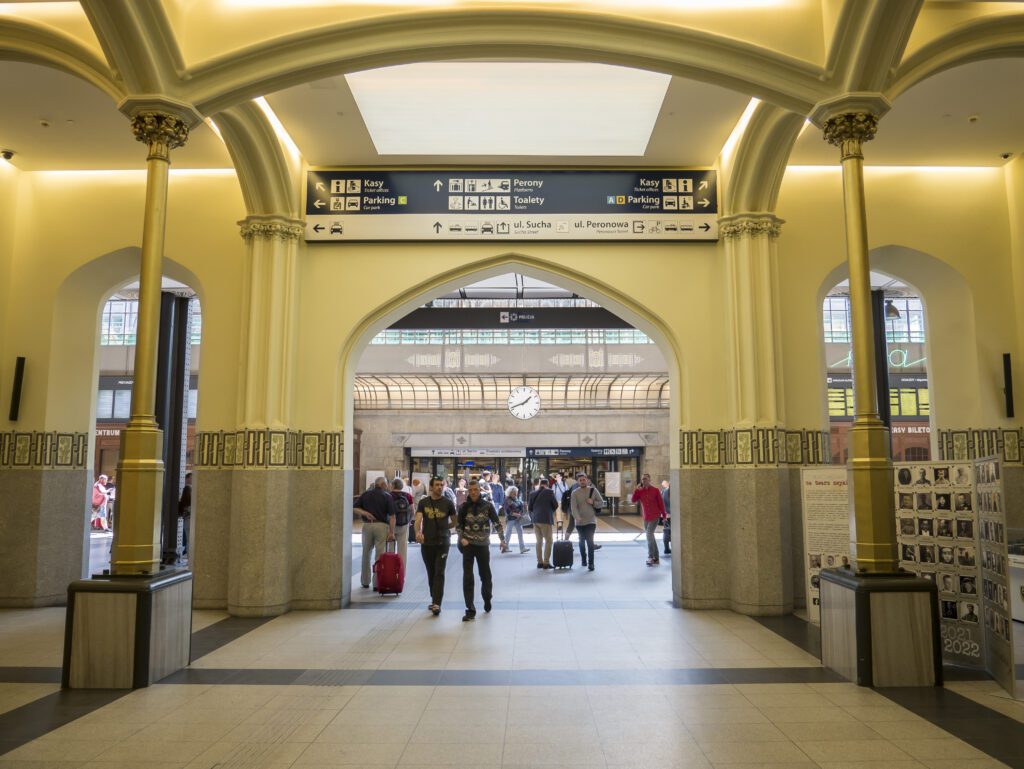
The intercity and international service is operated by PKP Intercity. It offers several train types:
There is a seat reservation on PKP Intercity trains – when you buy a ticket, you will be allocated a seat for free. If the connection is heavily booked, you will see the message “no seat guaranteed” on your ticket. You can then sit on any available seat, but when a person with a reservation appears – you must give them a seat.
Due to ongoing track renovations and upgrades, Polish railway stations often change the platforms your train will enter. If you have checked the platform on the Portal Pasażera, check the platform number again by checking the “ODJAZDY” (or Departures) board at the station. Be careful not to confuse it with “PRZYJAZDY” (Arrivals).
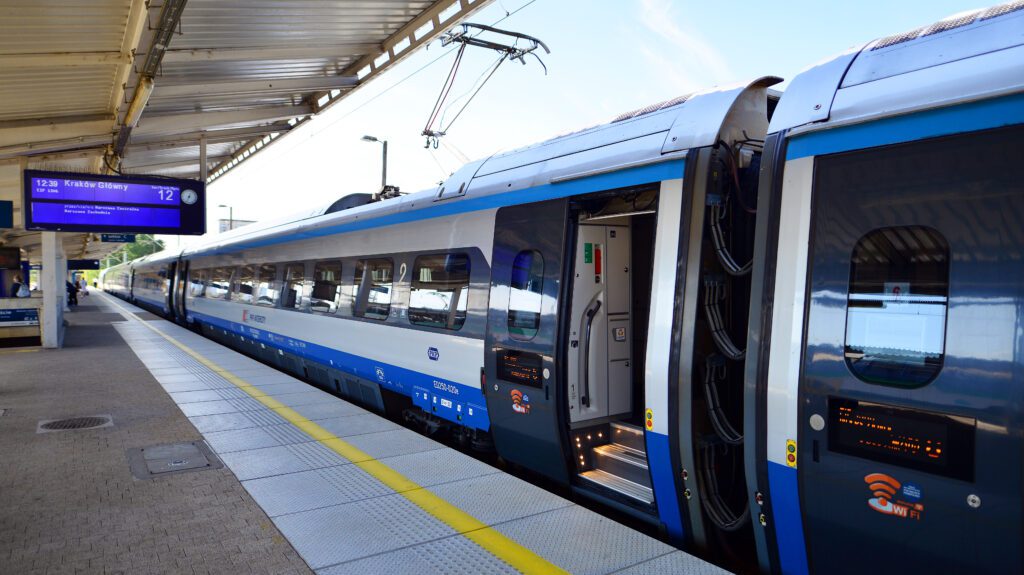
Transport in provinces and cities is provided by regional railways, which in Poland mostly use modern and fast trains. There is no single, consistent ticket system in Poland – you often have to buy a separate ticket for each train. Tickets bought online do not need to be printed – show them on the screen during the control.
Despite the lack of a consistent sales system for all trains, Koleo is selling tickets for an increasing number of Polish trains. Koleo offers a convenient sales system – however, some regional companies are still missing. If you don’t find your train there, you’ll have to buy your ticket at a ticket office, ticket machine or on the carrier’s website.
Travelling by train is safe – the days of pickpockets preying on lone rail travellers are over. However, it is still worth being vigilant and taking seats next to other travellers. If you want to leave your luggage behind when you arrive at the station, there are automatic luggage boxes at large stations. Homeless people and suspicious-looking people can be found at stations, but this is happening less and less frequently. All large stations have 24-hour security, CCTV and are patrolled by the police.

Longer-distance bus travel is less popular in Poland. A large market share is held by Flixbus, which launches domestic and international connections from large and medium-sized Polish cities. Popular tourist routes are served by small local carriers operating buses and small buses. You can find connections on e-podroznik.pl. There is no state-owned bus operator in Poland.
Urban transport in Polish cities is very well developed and is based on buses and trams (the latter in larger cities). Warsaw also has two metro lines – the only Polish city with an underground railway. You can buy tickets from ticket machines at bus stops and in the vehicles. In some cities (e.g. Wrocław), tickets bought in vehicles do not print out – instead, they are recorded on your payment card.
The easiest way to plan transport around the largest Polish cities is to use the jakdojade.pl app. It shows you connections from A to B, taking into account transfers and walking times between stops. In many cities, you can also buy tickets through it. It is one of the most frequently opened applications on my phone. You can buy a version without ads for a few zlotys a year.
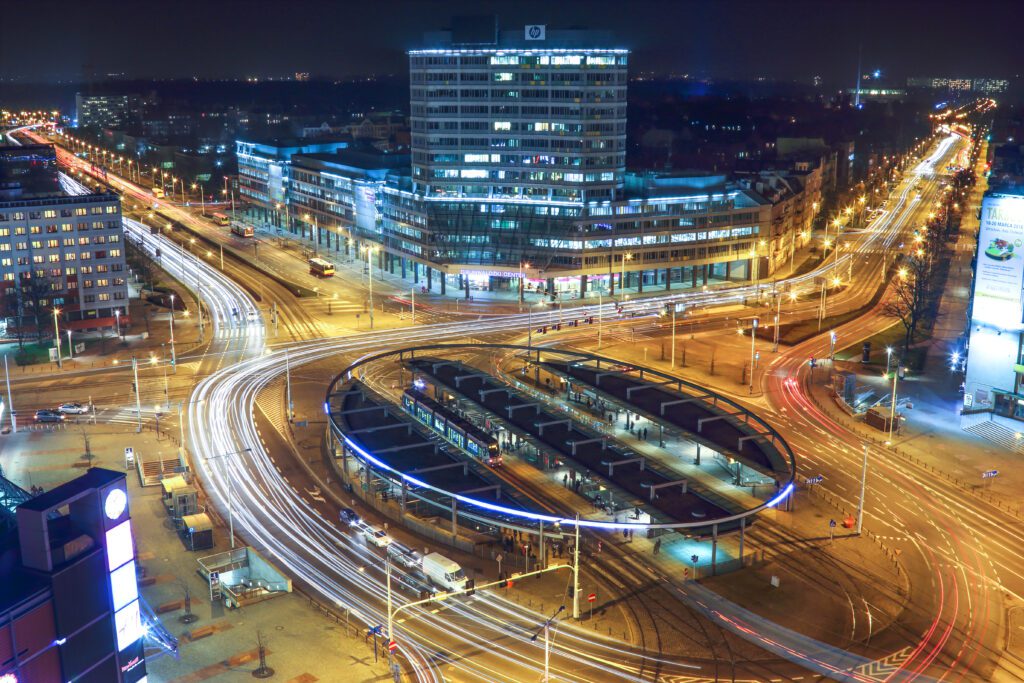
Tickets are usually available in single-ride and time-based versions (depending on the city, e.g. 15 min, 30 min, 60 min, 24 h, 72 h). Often the timed version is more cost-effective, as you can transfer within the ticket. Usually, bus and tram tickets are not valid on trains running in the city (the exception here is the SKM in Warsaw).
If you intend to live in the city for a longer time and use public transport frequently, you should consider season tickets (e.g. monthly tickets). They are much more cost-effective than single tickets. They are often encoded on the city card (e.g. Urbancard in Wrocław, Warszawska Karta Miejska in Warsaw).
Remember to validate your paper ticket at the ticket counter after buying it (it is invalid without it). Some tickets are instantly validated (check the information on the ticket, it should be available in English). Non-printed tickets (in Wroclaw) start validity the moment you buy them.
It’s unwelcome to behave loudly in public transport vehicles in Poland. If you talk loudly on the phone or listen to music without headphones, a fellow passenger may ask you to keep your voice down. He or she will probably ask you in Polish, so if you don’t feel confident in this language, it is better not to create such situations.
Once you choose the perfect place to live, make an appointment at the flat with the landlord to sign a contract. This will still give you the opportunity to see the conditions of the flat in detail and make sure it’s the right place for you. If something doesn’t feel right, you can still cancel, move to a hotel for a few days and thus give yourself time to find a new place.
Before signing the contract, take photos of the water, electricity and gas meters and the whole flat (including especially the condition of the kitchen, bathroom, walls and floors). Such material will protect you in case the landlord makes problems with returning the deposit at the end of the rent. Arrange to pay the rent and the deposit by bank transfer – that way, there will be no doubts about payment.
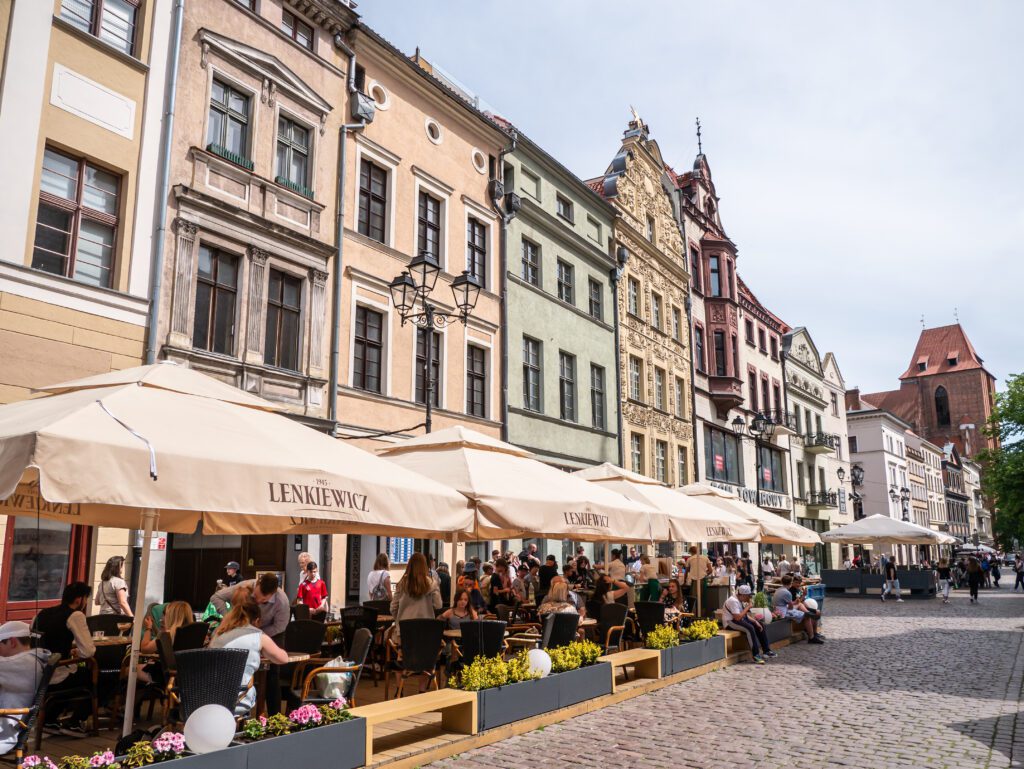
Ask your landlord about internet access. This is standard in Polish flats, but sometimes landlords don’t want to sign contracts with providers and leave this paperwork to the people who rent. If you don’t want to sign an internet contract (which can be more difficult for foreigners), you can use mobile internet as a hotspot. Ideally, however, the internet access should be taken care of by the landlord.
Remember to collect a set of keys – not only to the front door of the flat but also to the main entrance of the building, the letterbox and possibly the basement and communal garbage room. Check all keys before the landlord leaves the flat after signing the contract. It is not worth relying on the building entrance code alone – it is better to have a physical key in case the system fails.
It’s a good idea to say hello to your nearest neighbours. Prepare a few words in Polish as a greeting, e.g. “Dzień dobry, jestem nowym sąsiadem, miło Państwa widzieć!” (eng.: “Good morning, I’m a new neighbour, nice to see you”). It won’t be easy, but such a gesture will win the hearts of your neighbours!
In big cities, you can find IKEA shops where you can do basic shopping for your new flat (furnishings, things for the kitchen, etc.). IKEA offers its own transport, which can be convenient if you don’t have a car in Poland. You can also hire a bus for transport, but for this, you will require a Polish driving licence or an international driving licence issued in your country.
You can also do minor shopping at Pepco shops, where you can find basic kitchen and bathroom equipment and many nice things to decorate your flat. Pepco shops can often be found in shopping centres.
Grocery shopping in Poland is one of the most convenient experiences of its kind in all the times I have travelled the world. You can find grocery shops literally at every corner. There are dozens of discount grocery stores in major cities, which are cheap and offer a great variety of products. The main ones are Lidl and Biedronka (these two are the most popular and cheapest), but there are also Carrefour, Auchan, Kaufland, and Dino.

There are products available in discount shops (organic, gluten-free, pure ingredients) that in other European countries, I had to look for expensive organic shops. Regarding consumer awareness and available products in neighbourhood shops, Poland is a phenomenon on the continent. It is easy to buy organic food here – also at small markets organised regularly in towns. You can find them by typing the city’s name and “targ” or “bazar” into Google.
From your first moments in Poland, you will probably notice hundreds of small shops called Żabka (eng.: Frog), which are one of the great assets of living in Poland. They are open every day from 6 a.m. to 11 p.m. (even on Sundays, when there is a trade ban in Poland – but the owners get around these regulations), offer a great variety of products, including vegetables, fruit, fresh juices, dairy products, basic household and chemical products, alcohol, cigarettes. You can often do your shopping using the self-service checkout.
Żabka Nano is also appearing in cities. These shops have no employees – you enter them using an app, and when you leave, the system charges your payment card for the products. There are not many shops of this type so far, but I see them more and more in big cities.
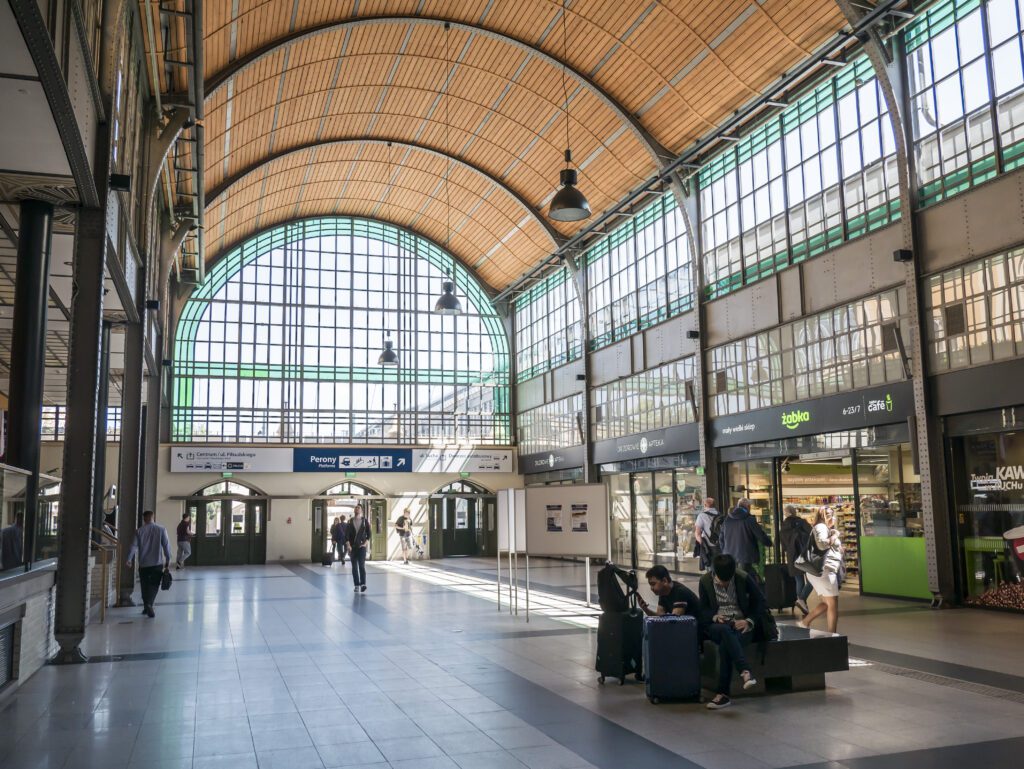
There are also several chain shops in Poland offering home delivery of products. Delivery is available at Auchan, Frisco.pl or Carrefour. This is convenient if you need to buy many heavy items and don’t feel like carrying them home. The courier will bring them to your door. If you want to buy more items of a certain type at once, order them on Allegro.pl with delivery to the Paczkomat (another service that doesn’t work anywhere as well as in Poland).
Polish towns and villages are covered by a network of almost 30,000 Paczkomats, which are self-service devices for receiving parcels 7 days a week, 24 hours a day. Some parcels arrive in less than 24 hours. Within a 5-minute walk, I have 7 such Paczkomats in Wrocław. Allegro.pl orders over 45 PLN have free delivery to Paczkomat (as long as you are in the Smart! programme, which only costs 45 PLN per year).
You’ll be able to pay cashless almost everywhere in Poland. Payment terminals are available even in small vegetable stalls, newsagents, etc. Regardless of this convenience, it’s a good idea to have some cash (PLN 200-300) with you for basic expenses and to help those in need. On the streets, you sometimes see elderly people trading flowers or fruit – if it’s not a problem, buy something from them and help them with their daily lives. Karma comes back.
A Polish bank account will come in handy for paying rent, getting paid from work and paying for shopping every day. It’s a good idea to set up a free account and have a payment card that will be accepted everywhere – something that doesn’t always work out with foreign bank cards. You need to choose a bank that offers accounts for foreigners preferably accounts in multiple currencies.
There are several hundred larger and smaller banks in Poland. Your best bet is to visit the branches of your chosen banks – the employees often speak English and will explain all the details of opening an account to you. Check out the current offers of a few big banks where I think it’s worth opening an account:
You will find ATMs of Polish banks on every corner – on main streets, bank headquarters, in shopping centres, at railway and bus stations. The fee for ATM withdrawals depends on your bank – they are often free, but check with your Polish bank. You don’t have to look for your bank’s ATM to be able to withdraw funds (sometimes, however, a commission is charged at another bank’s ATM).
In addition to your Polish bank card, it’s also a good idea to get two additional free cards to make your life in Poland easier and save a little money:
Cards are free to use, so you can order both the Curve card and the Wise card. You can then plug Wise into Curve and use it via Google Pay or Apple Pay, for example. Using my link, Curve will give you a 50 PLN bonus.
Once you have dealt with all the necessary formalities and feel more confident in your neighbourhood, you can fully commit to Polish everyday life. Life in Poland is a sweet spot between the highly consumerist, fast-paced communities of the West and the slower, close-knit nations of eastern and southern Europe.
Polish society has never been hermetic – by virtue of its location in Europe, Poles have always lived in harmony and joy with representatives of many nationalities. Although nationalist slogans still appear in Poland, most of the population is happy with the presence of foreigners and appreciates how much the whole country gains from them. Poland doesn’t have strict rules for social life – freedom of expression and a fair amount of relaxation in everyday life are important.
There is a lot going on in public spaces in Poland – especially in the big cities. The streets are full of local artists, musicians, and people selling handicrafts. Society is open, so it is common for strangers to enter into small talks with each other – especially while waiting together in a queue or travelling on public transport. However, this is not as strong as, for example, on the Iberian Peninsula. Poles still strongly value their privacy and do not like it to be disrespected by others.

In closed spaces such as shops, public transport vehicles, and offices, it’s unacceptable to use the phone without headphones. Listening to music aloud is perceived as very rude and often someone will point out to the person breaking this rule. Smiling at strangers was still perceived as strange 10 years ago, but nowadays it is becoming part of Polish culture.
Although Poland is still wrongly associated with high alcohol consumption, drinking alcohol is prohibited in public spaces. The same is true for cigarettes – smoking isn’t allowed in restaurants and public places, including at public transport stops. Smoking is becoming less and less fashionable.
Marijuana unfortunately still has the status of an illegal substance in Poland – with a certain exception. Legally, you can buy medical marijuana at a pharmacy on the basis of a prescription issued by a doctor. The long list of diseases for which cannabis is an effective medicine means that the number of medical marijuana patients is growing at a very high rate in Poland. As a foreigner, you can also obtain such a prescription by making a medical appointment (also online, also in English).
Poland has an extensive and modern network of express roads and motorways. The largest cities are connected by high-capacity roads, on which you can drive at 120 km/h ( express roads) or 140 km/h (motorways). On roads outside urban areas, you can drive 90 km/h, and in urban areas (e.g. in towns) no faster than 50 km/h. There are quite a few speed cameras along the roads, which take photos of cars exceeding the speed limit.
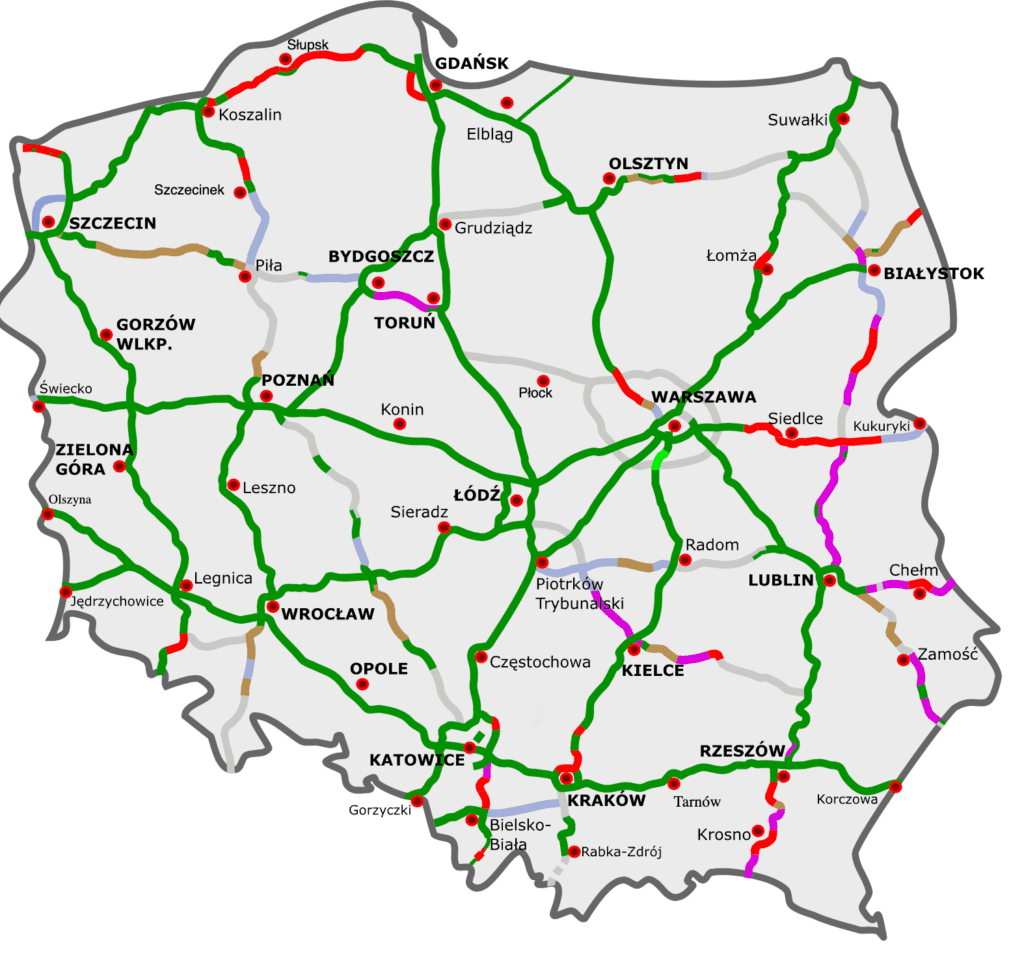
National roads and expressways are free for cars. Some motorways are tolled – you will pay at toll stations when entering the motorway. In 2023, the Polish government decided that all state motorways will be free of charge. The exceptions are roads managed by private entities, on which tolls still apply (A4 Katowice – Kraków and A2 Świeck – Konin).

To drive a car in Poland, you need a Polish driving licence or an international driving licence (which you can obtain either in your own country or already in Poland). Traffic drives on the right, and you must wear a seat belt (driver and all passengers) at all times when driving. You cannot use a mobile phone while driving (this is only possible in hands-free mode or with a headset).
As a pedestrian, you must remember that the red light at pedestrian crossings is unconditional. You can only cross the street when the green light is on and you cannot enter the street when the light starts to blink. There are often police patrols in cities who write out fines for illegal use of pedestrian crossings.
When deciding to live in any Polish city, it is worthwhile for you to spend some time getting to know the sights and interesting places. In my opinion, the most interesting Polish cities in terms of tourist attractions are Gdańsk, Kraków, Wrocław and Toruń, although you will find a lot of museums, attractions and unique places in each city. You can find out about the most interesting corners of Poland in the article below.
A reliable way to get to know your new city is to walk around the neighbourhoods, visit interesting cafés and restaurants and take part in organised tours. A good idea for your first few days in the city is to take part in Free Walking Tours, which are organised in the biggest cities in Poland. They are free, but a nice gesture is to give the guide a tip – preferably 20-50 PLN (5-12 EUR).

You can look for sightseeing ideas on travel blogs – I have guides for Wrocław, Toruń, Masuria (a part of Poland with hundreds of lakes) or the seaside town of Hel. Also look at tourist information centres, where you can pick up leaflets and speak to staff in English. You can also find local guides on Showaround.com.
Polish is probably one of the most difficult languages you will ever learn. Case variation, dozens of forms of verbs, nouns and adjectives, difficult pronunciation and many words that are completely unlike any other language – this is what you can expect from your first encounter with Polish. Sound like a challenge?
Polish is not easy, but you can pick up the basics in just a few weeks. It is enough to memorise a few dozen frequently used phrases so that you will be able to say hello and order something in a restaurant, have a short conversation in a shop or greet someone on the street.
There are several channels on YouTube to help you learn the basics of Polish. Look at the well-run channels Learn Polish with Monika or Learn Polish with PolishPod101.com. I even managed to come across a video where learning Polish happens… to the rhythm of ASMR, which sounded to me (a Pole), very pleasant and charming! As Poles, we love it when foreigners try to speak Polish and in 99.9% of cases we try to show it with a smile and help as much as we can.

It is also a good idea to… talk to Polish people you meet. You can try to order coffee using only Polish, say hello to your neighbours or make contacts at your new job or coworking space. You can also sign up for Polish language courses for foreigners – there are many language schools in the bigger cities. Look for them in your city by typing “Polish for foreigners” into Google.
The best way to quickly acclimate to a new country is to immerse yourself in the local culture as quickly as possible. Initially, you will be most comfortable moving around other foreigners, as there will be no language barrier. My advice is to look for opportunities where you will also spend time with Polish people as soon as possible. Dating is just one of the ideas!
I recommend you to look on Facebook for a list of events organised in your city – concerts, events in pubs and beach bars, workshops, art exhibitions, etc. By attending such an event, you will have the opportunity to use even basic phrases in Polish in various contexts. You will quickly notice that your vocabulary list is growing and that you are becoming more and more confident in talking to locals.

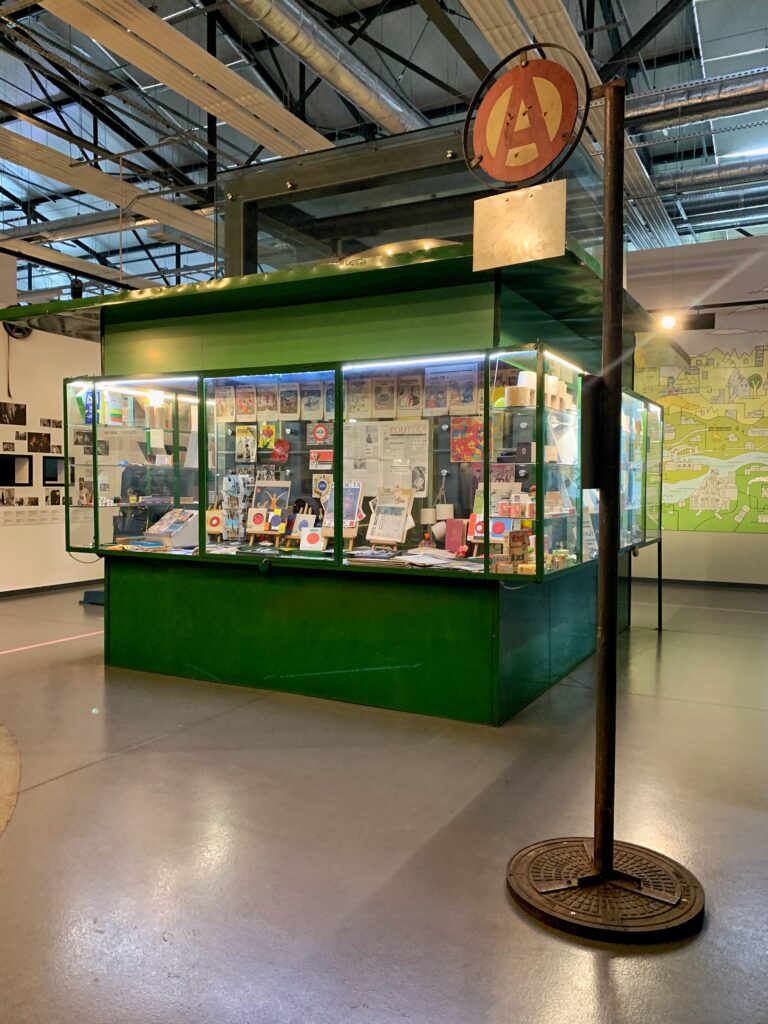
Many Poles look for people they can talk to in English on an advertising site like OLX or Facebook. You can approach such people and offer to help with English even for free, but in return, you can ask for some conversation in Polish. You’ll quickly pick up a new acquaintance but also be learning Polish from a local – getting feedback right away.
Trips to Polish theatres, opera houses and concert halls would be a good idea. You won’t always be able to find events in English, but even if you don’t understand the dialogue in the theatre, you’ll have the opportunity to watch another building block of Polish culture. Also, go for walks to popular city places – such as the river banks or parks. In this way, you will get to know the Poles better and… fall in love with this beautiful country faster!
You have just learnt a long list of steps to look after before moving to Poland. Such a journey is an important life decision, but I am convinced that Poland is one of the best possible choices not only in Europe but also in the world. The country’s popularity is steadily growing, living conditions are improving significantly, and on a cost-quality of life balance, Poland comes out great in my opinion. I wish you the best for your stay in Poland!
Welcome to my travel blog!

Hi! I’m Bartek Dziwak – traveller & travel blogger with 10 years of travel experience.
Feel free to use a tons of information from this blog to make your travel better.
Practical Tips
Book your stay: check out hotels and hostels in a good location and book your stay before others take your place.
Exchange money cheaper: order a free Curve card to exchange money cheaper than in an exchange office and get £10 as a gift
Check My Travel Shop: check ready-made hiking routes and city attractions maps that will make your sightseeing easier.
Is my article helpful?
Help me keep making these travel articles for you by supporting me with a cup of coffee.
Check My Ebooks
Polish Mountains - MAP of Mountain Ranges & Peaks & Accommodation
BIAŁOWIEŻA NATIONAL PARK – MAP of 50+ Best Places to See
MAZURY & WARMIA (LAKES DISTRICT) – MAP of 200+ Best Places to See
Mountains of Lower Silesia (Poland) - 55 Best Hiking Routes
Prepare to Travel Abroad – Practical Tips
Exchange money cheaper: order a free Curve card to exchange money cheaper than in an exchange office and get £10 as a gift.
Book accommodation that suits you: check out hotels, hostels & apartments in a good location and book your stay before others take it.
Check My Travel Shop: check my ebooks with maps of cities & regions attractions and ready-made hiking routes that will make your sightseeing easier.
Is my article helpful to you? Help me keep making these travel articles for you by supporting me with a cup of coffee. I really love Aeropress!

Hi from the author! I’m Bartek Dziwak – traveller and founder of BartekOnTheGo.com travel blog.
I inspire people to travel around the world on their own and discover both famous and unusual places.
Check My Ebooks

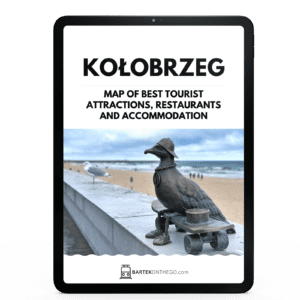
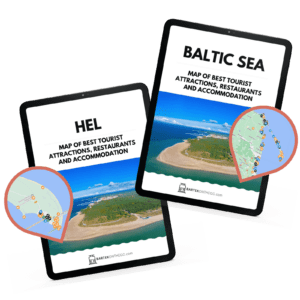
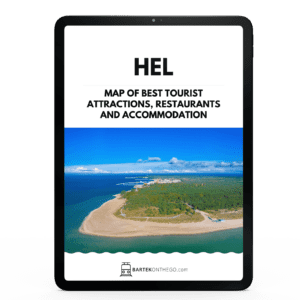
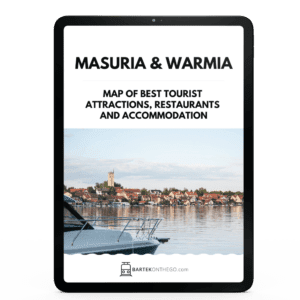

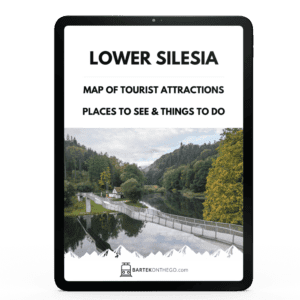
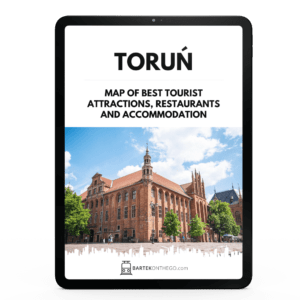
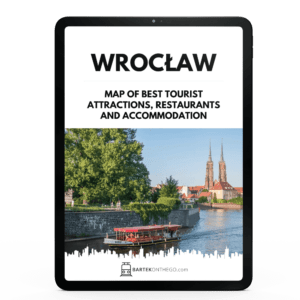
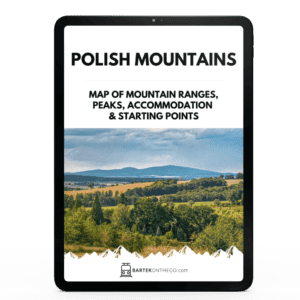
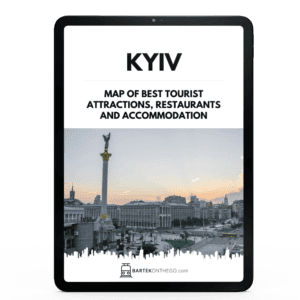

| Cookie | Duration | Description |
|---|---|---|
| cookielawinfo-checkbox-analytics | 11 months | This cookie is set by GDPR Cookie Consent plugin. The cookie is used to store the user consent for the cookies in the category "Analytics". |
| cookielawinfo-checkbox-functional | 11 months | The cookie is set by GDPR cookie consent to record the user consent for the cookies in the category "Functional". |
| cookielawinfo-checkbox-necessary | 11 months | This cookie is set by GDPR Cookie Consent plugin. The cookies is used to store the user consent for the cookies in the category "Necessary". |
| cookielawinfo-checkbox-others | 11 months | This cookie is set by GDPR Cookie Consent plugin. The cookie is used to store the user consent for the cookies in the category "Other. |
| cookielawinfo-checkbox-performance | 11 months | This cookie is set by GDPR Cookie Consent plugin. The cookie is used to store the user consent for the cookies in the category "Performance". |
| viewed_cookie_policy | 11 months | The cookie is set by the GDPR Cookie Consent plugin and is used to store whether or not user has consented to the use of cookies. It does not store any personal data. |